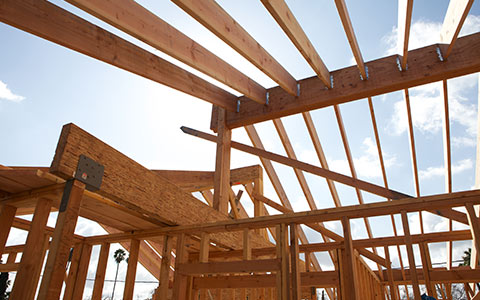How the Home Insurance Claim Process Works


Owning a home can mean dealing with the unexpected – from a tree falling on your roof to a pipe bursting in your bathroom. Because you likely can’t prevent all unwanted surprises, knowing what to expect if you have a homeowner’s claim can help give you some peace of mind.
While insurance carriers can handle claims in different ways, here are some basic steps in the process.
If Your Home Has Been Damaged:
- Get the OK to reenter your home. If your home has extensive damage, do not go back inside until cleared to do so by emergency personnel or local government officials, even if the damage is confined to one room.
- Have your info ready. Typically, when you report your claim, you will be asked to provide your name, contact info, policy info, type and date of loss, and a description of the loss and of any injuries. If you have a home inventory, you may want to have it handy. Generally, your claim will be assigned a claim number and a claim professional, also called an adjuster, who will work with you to adjust your claim.
- Take steps to mitigate further damage, such as buying tarps to cover holes in your roof. Be sure to save your receipts.
Beginning the Claim Process:
- Report your claim. Contact your insurance company as soon as possible. If you are a Travelers customer, you can report a claim anytime online or by calling 1.800.Claim33. The sooner you report it, the sooner your insurer may be able to help.
- Inspecting the damage. The claim professional typically will call you to discuss what happened, what your insurance policy may or may not cover and make arrangements to inspect the damage in person.
- Document your losses. Using photos or videos can help you remember things that you may have lost. If you don’t have an inventory, look for photos of the damaged areas. You’ll want to make a list of everything damaged inside your home.
- Save your receipts. When making any necessary temporary repairs or living arrangements, protecting property from further damage or making temporary housing arrangements, be sure to save your receipts. Your insurer may ask you to provide them as part of the claim process.
We are an insurance company that cares. We help you get the coverage that meets your needs to help protect the things that are important to you, so you don’t have to worry.


Relocating After a Loss:
- Loss of use. If you are not able to stay in your home after a covered loss, your homeowners policy may reimburse you for additional living expenses, such as hotels, car rentals and other day-to-day normal expenses caused by having to temporarily relocate.
- Temporary housing. If you need temporary living arrangements while your home is being restored after a covered loss, your carrier may refer you to a service provider or give you permission to stay at a hotel or rental property.
- For more on Travelers’ loss of use coverage, click here.
Resolving a Claim:
- Timeframes vary. Every loss and insurer is different, so the length of time to resolve a claim varies. The claim professional’s inspection of the damage and details of the loss will help determine the time needed to settle a claim.
- Receiving payment. Once the claim professional determines that your policy covers the loss, you can generally expect to receive a check based on an estimate of the damage, either on the spot or soon afterward.
- If you are a Travelers customer, you can learn more about your property policy here.
Protect your home the way it protects you by choosing the property insurance coverage that meets your needs.
More Prepare & Prevent

Information You May Need for a Homeowners Insurance Quote
Getting a homeowners quote can take only a few minutes when you have the correct information.

Is Your Home Insured to Its Replacement Cost?
If your home isn’t insured to its estimated replacement cost, your homeowners policy may not cover the full cost to rebuild.

How Does Renters Insurance Work?
Get to know the difference between homeowners and renters insurance coverages.